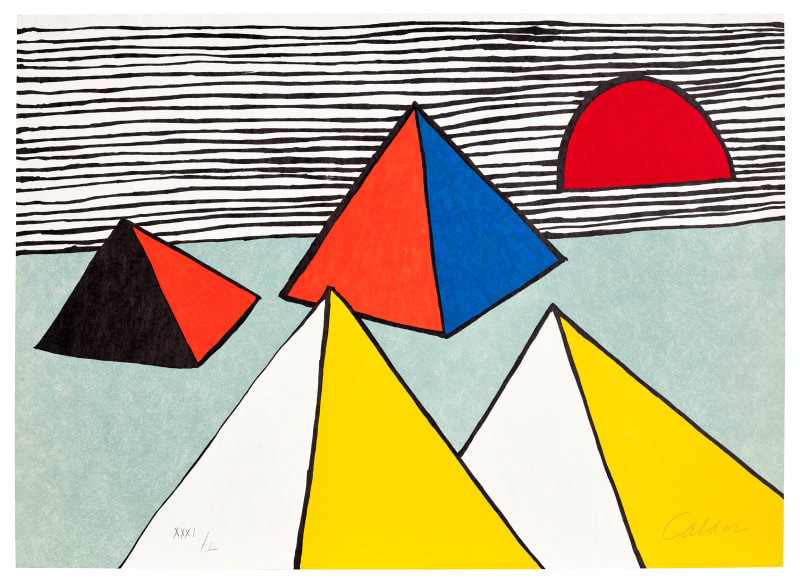Alexander Calder AMERICAN, 1898-1976
Alexander Calder was an American sculptor known both for his innovative mobiles (kinetic sculptures powered by motors or air currents) that embrace chance in their aesthetic, and static “stabiles”[1] monumental public sculptures. He didn’t limit his art to sculptures; he also created paintings, jewellery, theatre sets and costumes.
Calder preferred not to analyse his work, saying, “Theories may be all very well for the artist himself, but they shouldn’t be broadcast to other people.”
Born into a family of artists, Calder’s work first gained attention in Paris in the 1920s and was soon championed by the Museum of Modern Art in New York, resulting in a retrospective exhibition in 1943. Major retrospectives were also held at the Solomon R. Guggenheim Museum (1964) and the Museum of Contemporary Art, Chicago (1974).
Calder’s work is in many permanent collections, including the Whitney Museum of American Art, the Guggenheim Museum, the Museum of Modern Art, the National Gallery of Art in Washington, D.C., and the Centre Georges Pompidou in Paris. He produced many large public works, including .125 (at JFK Airport, 1957), Pittsburgh (Carnegie International prize winner 1958, Pittsburgh International Airport) Spirale (UNESCO in Paris, 1958), Flamingo and Universe (both in Chicago, 1974), and Mountains and Clouds (Hart Senate Office Building, Washington, D.C., 1996).
Although primarily known for his sculpture, Calder also created paintings and prints, miniatures (such as his famous Cirque Calder), theater set design, jewelry design, tapestries and rugs, and political posters. He was honored by the US Postal Service with a set of five 32-cent stamps in 1998, and received the Presidential Medal of Freedom, posthumously in 1977, after refusing to receive it from Gerald Ford one year earlier in protest of the Vietnam War.
An important Calder work is the monumental “Floating Clouds” (1952–1953) of the Aula Magna (Central University of Venezuela) of the University City of Caracas in Venezuela. This work is a Unesco World Heritage Site. Calder’s clouds were specially designed to combine art and technology, making the auditorium one of the top 5 university auditoriums in the world by sound quality.

